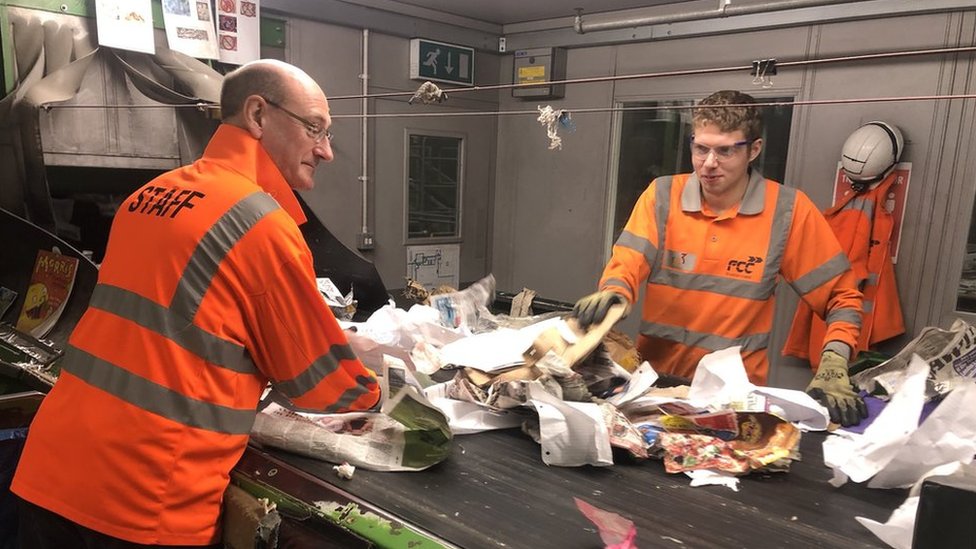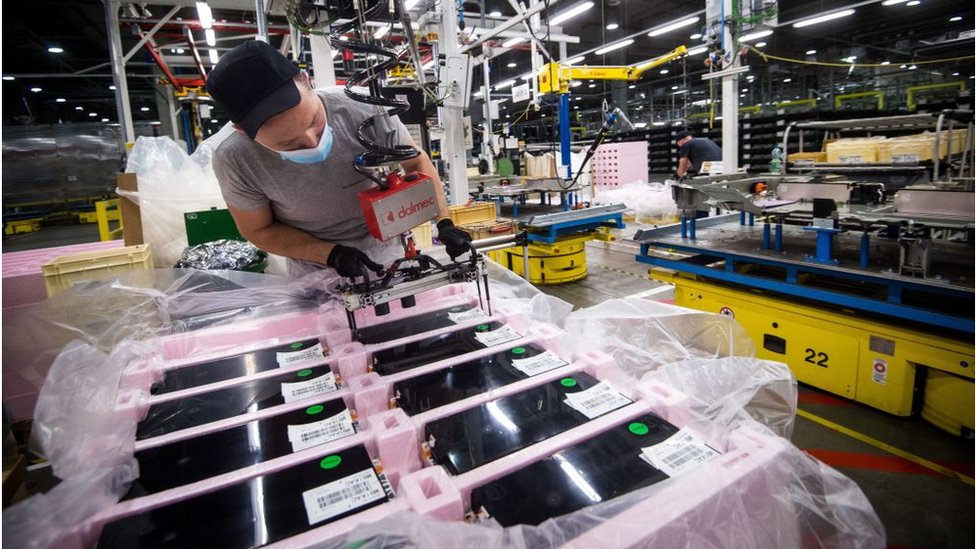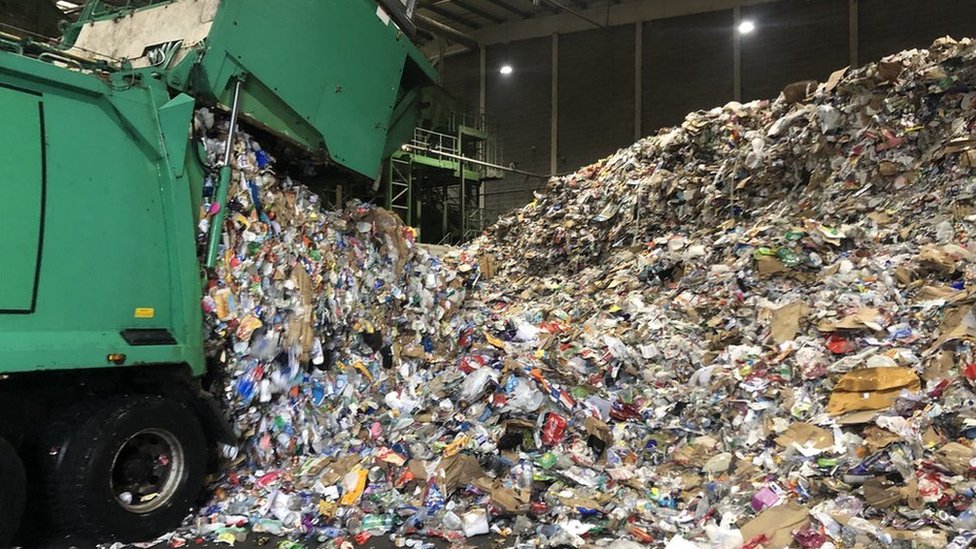The stress levels rocketed for Ian Scott-Browne earlier this month, when one of his colleagues radioed him and told him to call the fire brigade.
Smoke had been spotted coming from one of the sorting machines at the Smallmead recycling centre, just outside Reading in southern England.
He knew that a fire in one of the machines could be catastrophic as burning plastic, paper and cardboard could be quickly spread by conveyor belts which connect all the machines in the facility.
“My concern was that we’d lost control of where the fire was,” says Mr Scott-Browne, who is an operations manager at the recycling facility.
For him there was a tense 15 minutes while firefighters, helped by some of his staff, urgently took heavy metal panels off the side of the sorting machines to track down and extinguish the fire.
Small fires like that are surprisingly common at recycling centres. Somewhere in the UK there is one every day, on average.
As a result the industry has become good at extinguishing them, but they would rather not deal with them at all, particularly as recycling centres are full of combustible materials.
The problem is that however attentive staff might be to the threat of fire, they can’t control what people put in their recycling bins.
The Environmental Services Association (ESA), which represents waste firms like Biffa, Veolia and Suez, says too many batteries are going into either recycling bins or black rubbish bags, where they are easily damaged by sorting equipment and start to burn – so-called “zombie” batteries.
The ESA has launched a campaign called Take Charge which encourages people to dispose of batteries properly.
“Unfortunately, the majority of batteries thrown away in the UK at the moment are not put in the proper recycling bins. Fires caused by carelessly discarded zombie batteries endanger lives, cause millions of pounds of damage and disrupt waste services,” says Jacob Hayler, executive director of ESA.


Lithium-ion batteries, which power mobile phones, tablets and toothbrushes, can be extremely volatile if damaged. CCTV footage taken at several recycling centres shows explosions sending flames and debris shooting across sorting areas.
And those sorts of batteries are a growing menace. Between April 2019 and March 2020, lithium-ion batteries were suspected to have caused around 250 fires at waste facilities. That is 38% of all fires, up from 25% compared to the previous year, according to the latest data from ESA.
In many cases the precise cause of a fire is never established but ESA says it is likely that lithium-ion batteries account for an even bigger proportion of fires.

Paul Christensen, professor of pure and applied electrochemistry at the University of Newcastle, has deliberately damaged lithium-ion batteries in experiments to make them explode.
The experiments are part of his work to help fire brigades tackle fires involving lithium-ion batteries.
Prof Christensen is a “massive fan” of the batteries and points out that they are perfectly stable under normal conditions.
However, he says that even small lithium-ion batteries, similar to the ones in your mobile phone, would explode “with a rocket flame” if punctured.
His real concern though is with the much bigger batteries found in electric cars, or used to store electricity in homes and businesses.

They are generally divided into many small cells and managed by software that keeps the battery running smoothly. But if a car crashes and some of those cells are damaged, the chemicals inside can generate huge of amounts of heat, damaging and igniting other cells.
“An electric vehicle will burn for much longer than an internal combustion vehicle. They give off potentially explosive and toxic fumes. They can reignite hours, days or weeks after the incident,” says Prof Christensen.
Electric cars are still relatively rare on the roads, but that will change in the coming years.
In February the UK government brought forward a ban on selling new petrol, diesel or hybrid cars from 2040 to 2035 at the latest.
Governments elsewhere in the world are also encouraging electric car sales – in China the government wants 25% of new cars sold to be electrified by 2025.
“That means not just more electric vehicles, but the production facilities will get more and bigger… the storage facilities are going to get more and bigger,” Prof Christensen says.
He wants planning and safety regulations to take account of the risks of having so many more powerful batteries. He also wants better training for firefighters.
Eurobat represents European Automotive and Industrial Battery Manufacturers. It says safety is always “high on the agenda”, and is supporting a colour-coding system for batteries that would make sorting them easier.
In the meantime the UK waste industry just wants people to be more careful when disposing of any battery.
“We urge consumers to please recycle their batteries responsibly by using battery recycling points in shops and recycling centres, or a separate battery kerbside collection if available,” ESA’s Jacob Hayler says.
Follow Technology of Business editor Ben Morris on Twitter

